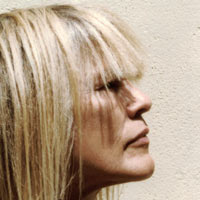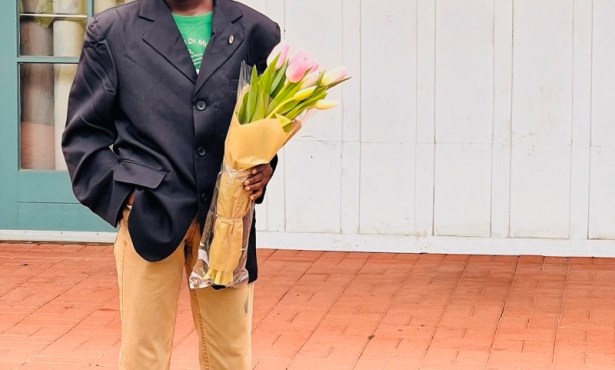Yule Yearnings and Giftings
Joe Suggests Some Jazzy Gifts
FRINGE PRODUCT GIFT GUIDE, PART 1-A CARLA BLEY XMAS: Christmas is assuredly in the air and in the news, in all the crassly commercial and economy-spooky ways as well as the warm-and-fuzzies. Re: the latter, this is the time we scan the inevitable pile of new Christmas albums entering the cultural cosmos.
One humble reporter’s early vote for best, most must-have Christmas album of the season: Carla’s Christmas Carols (WATT/ECM). The Carla in question is the brilliant Carla Bley, who cooked up this fascinating and refreshed variation on yuletide themes on commission from the Essen Philharmonic (Bley is among countless American jazz musicians better appreciated and accommodated in Europe than her native country. C’est la vie de jazz). She is joined by bassist Steve Swallow (longtime partner in music and marriage) and the Partyka Brass Quintet, an accomplished German group issuing nimble ensemble work and sharp soloing.

Leave it to Bley to reconsider and breathe new life into these chestnuts and create what may enter the upper echelon of the greatest jazz Christmas albums (Wynton Marsalis’s project of 20 years back belongs there, as well). Other creative musicians tackling the challenge of fresh Christmas projects dodge the usual songbook, but not Bley: Her approach is to rejuvenate the yuletide hits- i.e. “O Tannenbaum,” “The Christmas Song,” “O Holy Night,” “Joy to the World,” and two versions of “God Rest Ye Merry Gentlemen,”-from the bottom up, with intriguing arrangement detours and her signature, sly way with re-harmonization and deviated structures. Ladled naturally into this mix are a couple of her classic beauts, “Hell’s Bells” and the hypnotic tune “Jesus Maria.”
Just as Bley devised an insightful and slightly subversive book of musical Americana for the Liberation Music Orchestra’s Not in Our Name (but unfortunately was a no-show at last year’s LMO concert at the Lobero), she gives Christmas songs a Bley-phonic once-over, and it’s a lovely spiked fruitcake.
FRINGE PRODUCT GIFT GUIDE, PART 2-NEW JAZZ CDS: Gretchen Parlato, In a Dream (ObliqSound): New and noteworthy female jazz singers-of-note keep alighting on the musical landscape, and two of this year’s star newcomers to the scene were Melody Gardot and Gretchen Parlato, whose warm, wonderful, and subtly chancy album In a Dream is a jewel among chanteuse sets this year. While Parlato is part of the vocalist crowd with pop-minded persuasions, she brings an innately new and jazz-colored approach to whatever material she touches. We know something new and cool is up from track number one, a version of Stevie Wonder’s “I Can’t Help It.” She also sings vocal versions of jazz’s left-of-center classics you don’t often hear adorned with lyrics, like Herbie Hancock’s “Butterfly,” Wayne Shorter’s “E.S.P.,” and Duke Ellington’s “Azure.” In a Dream also serves as a forum for some of the brighter lights in the ranks of young-but-established jazz players of the day, including guitarist Lionel Loueke, pianist Aaron Parks, bassist Derrick Hodge, and drummer Kendrick Scott. Jazz, whatever its woes in terms of the business infrastructure and public appreciation, is in good hands with the players-and singer-heard here.
Henry Threadgill Zooid, This Brings Us To, Volume 1 (Pi): Still one of the greatest, most innovative, and most underrated jazz musician-thinkers alive, Henry Threadgill finally has added another title to his discography this year. Another cryptic but telling title adorns his latest, This Brings Us To, Volume 1 (like his last one, 2005’s Pop Start the Tape, Stop), with his group Zooid-here, guitarist Liberty Ellman, trombonist-tubaist Jose Davila, bass guitarist Stomu Takeishi, and drummer Elliot Humberto Kavee along with Threadgill on alto sax and flute. Song titles, too, mess poetically with language as we know it-“White Wednesday Off the Wall,” “Mirror Mirror the Verb”-and are in perfect synch with Threadgill’s music, a unique language that might remind us variously of some post-jazz avant-garde, African elements, Stravinsky, New Orleans brass music filtered through otherworldly harmonic logic, Ornette Coleman in a chamber way, or other reference points. But all roads lead back to Threadgill’s vision, unlike any other.



